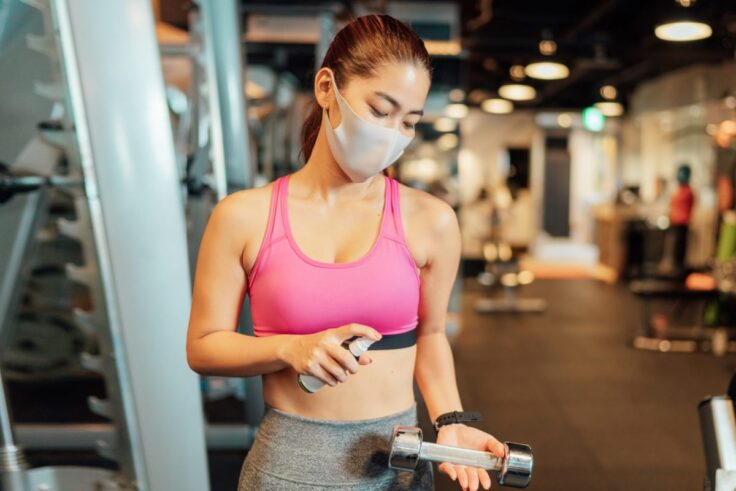Gym Safety And Hygiene During The Pandemic

Pre-pandemic, gym safety largely referred to issues such as practicing proper form and stretching to avoid injuries – and these are all important matters.
However, since the start of the COVID-19 pandemic, gym safety has taken a turn to center on hygiene.
That makes sense since a number of gyms have been linked to COVID-19 outbreaks, though over the last many months it’s become clear that this needn’t be the case.
Rather, simple practices on the part of both gym owners and members can go a long way towards keeping everyone safe.
Gym Safety, Hygiene, And New Cleanliness Norms
These gym safety tips will help both gym owners and clients to adhere to the new cleanliness norms regarding the current pandemic:
1. Ventilation Is Key
There have been several cases of COVID-19 outbreaks at gyms, but they’ve largely been in smaller facilities or group classes.
On the other hand, a coach in Virginia spent time with 50 athletes before learning they have contracted the virus. And not a single individual was infected because the facility boasts excellent ventilation, paired with strict, ten-foot spacing protocols and no equipment sharing.
Though this building’s standard HVAC might not have been sufficient, the gym is in an industrial space with multiple large doors. And by keeping those open, the owner was able to increase ventilation well above what experts recommend for preventing viral transmission.
Obviously, many gyms don’t have the ability to introduce such extensive ventilation, but members should inquire about the HVAC system before returning to a facility.
In general, experts recommend only patronizing spaces with air exchange systems, rather than any type of recirculation.
2. Skip Shared Supplies
People go to the gym to use equipment they likely don’t have at home, but there’s a limit to what you should be sharing, even given the limited likelihood of surface-based transmission.
Given that, it’s wise to bring your own towel, yoga mat, boxing gloves, and other high-contact items.
The fewer things you share, the lower your risk, and the more control you have over hygiene matters.
3. Set A Schedule
While gymgoers may have to register for slots in specific classes, in general, such facilities are free for all, with people coming and going on their own schedules. That’s not an appropriate plan right now, for several reasons.
First, open gyms should be operating at only partial capacity in order to preserve social distancing.
And, second, gym owners should know who is on-site at a given time in order to facilitate contact tracing. In order to make that possible, gym owners should institute an online appointment scheduling system or a WordPress booking system.
Online scheduling can ensure that people have access to equipment without too much overlap, limit how many people are in the gym or attending a class, and make it much easier to contact the appropriate individuals if someone is found to be COVID positive.
And, unlike retrofitting an HVAC system, scheduling software is affordable and easy to implement.
4. Wear A Mask
While some will insist that wearing a mask during high-intensity exercise isn’t safe, the reality is that science doesn’t support this.
That’s why infectious disease experts hold a firm line: everyone in a gym should be wearing a mask, and if they’re not, you should leave.
This is particularly important because heavy breathing while exercising will obviously propel droplets further than ordinary breathing while walking about.
Every Step Matters
It takes a lot to keep a gym sufficiently clean during a pandemic, and every factor matters. But the good news is that most clients think that their gym is doing a good job.
Now, with the beginning of vaccine distribution, gyms need only keep up the good work a little longer. The general population could be vaccinated within this year and brighter days are ahead.